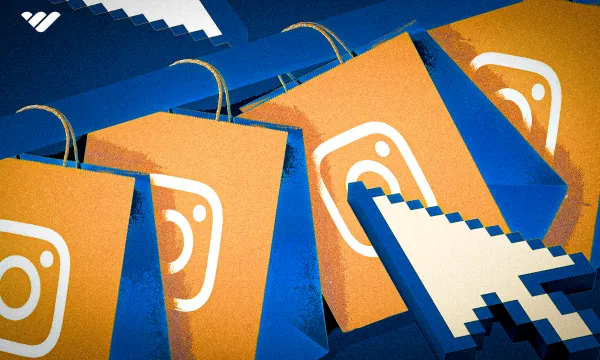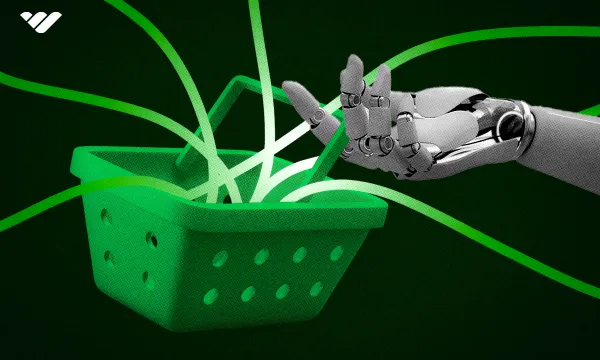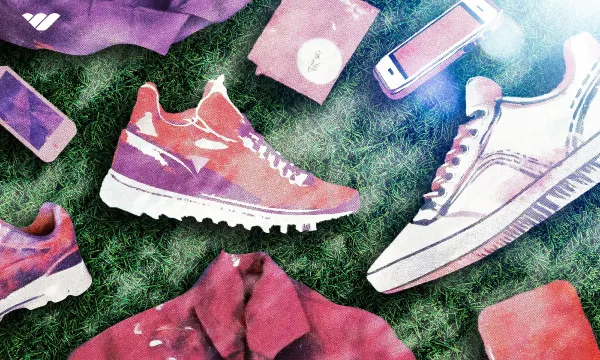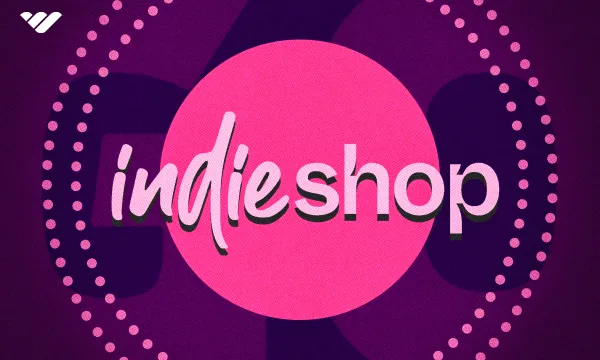With over 2 billion active monthly users, Instagram plays a significant role in how people shop online today. From the product discovery phase, to researching products, to getting recommendations from their favorite influencers, to now purchasing items directly within the platform, Instagram is here to stay when it comes to the ecommerce environment.
And while social media platforms have mushroomed over the years, Instagram remains well ahead of the other social media platforms when it comes to marketer usage. According to eMarketer, more than 75% of marketers used Instagram for influencer marketing in 2023, putting this social media platform ahead of Facebook, TikTok, and YouTube.
The question is: what made Instagram so popular among marketers?
One thing is clear. Instagram evolved over time, and now it’s one of the driving forces of social commerce. In fact, data from Instagram shows nearly half of people say they use the platform to shop weekly.
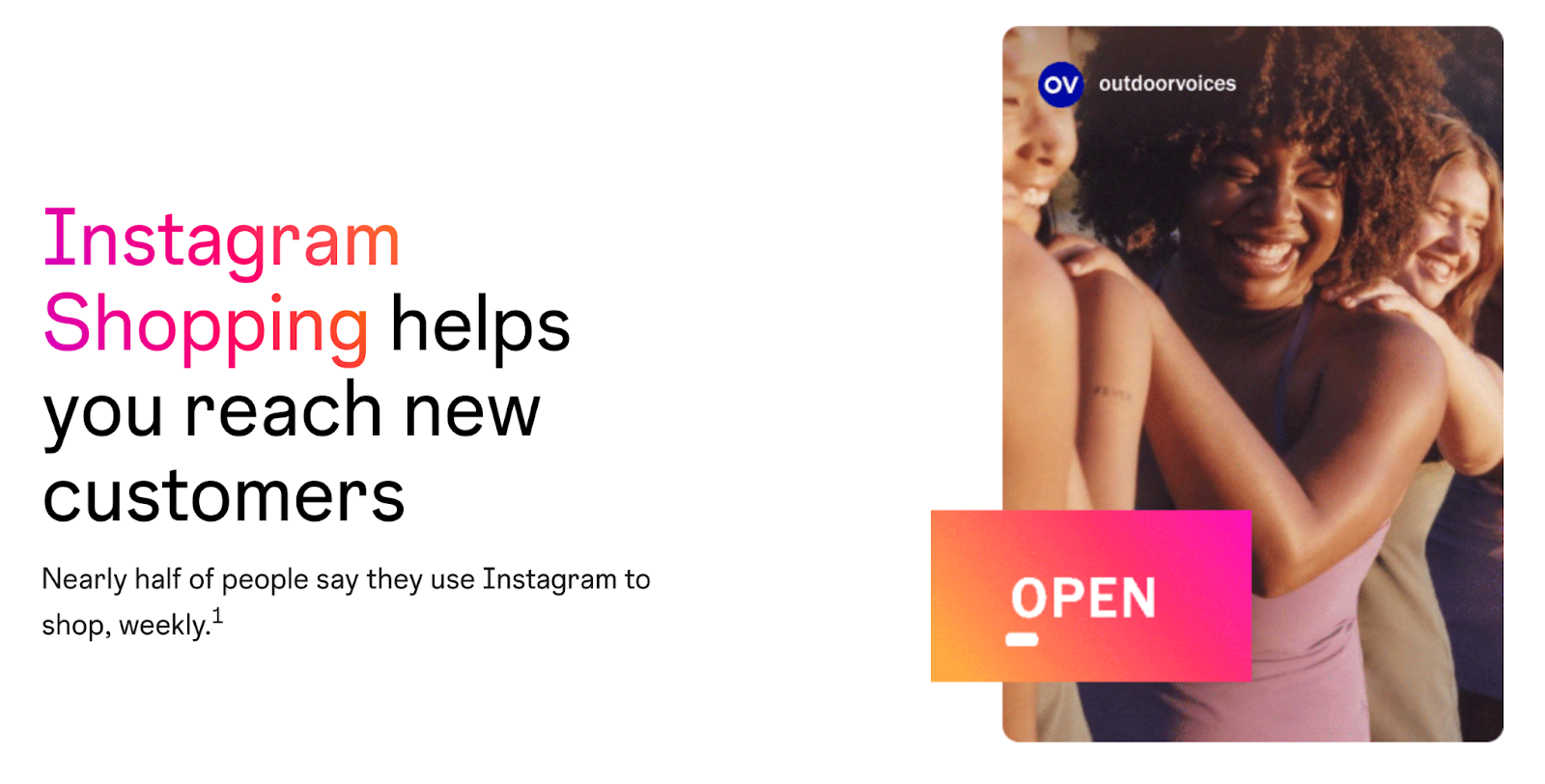
This opens the door to several questions:
- How do you set up an Instagram shop?
- What are the benefits and best practices for selling on Instagram?
- Can you sell digital products through Instagram?
It’s time to find the answers to these questions and more. We’ve compiled a comprehensive guide to setting up an Instagram shop and selling on Instagram, packed with tips, examples, and best practices.
What is Instagram Shopping?
Instagram Shopping is a set of features that allow people to easily shop a brand’s photos and videos across Instagram. Instagram started as an image-sharing app, then became an engine for influencer marketing and product discovery, and today, it’s now also a shopping platform that allows users to shop without leaving the app.
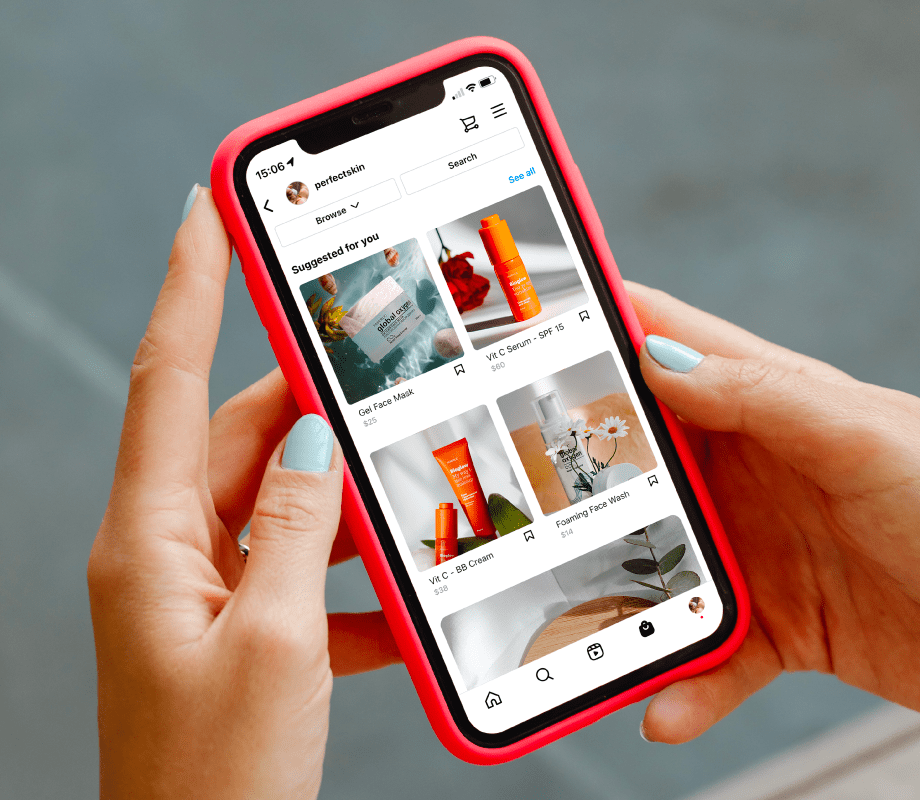
What makes Instagram Shopping attractive for businesses is the wide range of shoppable formats, including video, static images, Instagram Stories, Reels, carousels, and Collections.
Instagram Shopping includes the following elements:
- Shop
Your Instagram shop is the central place where customers can browse products and explore collections. - Collections
Collections let you curate products into themes, like new arrivals, seasonal trends, gifts, and more, to help customers navigate your Instagram shop more easily and find what they need in a few clicks. - Product detail pages
PDPs contain in-depth information on items from your product catalog, including product descriptions and prices. Product detail pages also provide the content where the product is tagged on Instagram and drive people to your website, where they can complete the transaction. - Checkout on Instagram
Checkout on Instagram lets people make purchases directly through the app. In-app checkout is currently available to all eligible U.S. business and creator accounts.
Why Sell Things on Instagram?
Providing customers the option to shop through social media platforms adds a layer of convenience to the experience, removes friction, and brings customers closer to making a purchase. There’s no doubt that Instagram has a significant impact on customers’ shopping behavior, and as such, it plays a vital role in the growth of social commerce.
Let’s look at some of the main benefits of selling your products or services on Instagram:
Drive product discovery through shoppable content
The average time spent on Instagram is 33 minutes per day, according to Statista. This number has doubled in only four years, which proves that Instagram is one of the most influential platforms nowadays. Data from Instagram shows that 130 million accounts tap on shopping posts to learn more about products every month. These statistics testify that Instagram has become a product discovery tool, inspiring customers to make their next purchase.
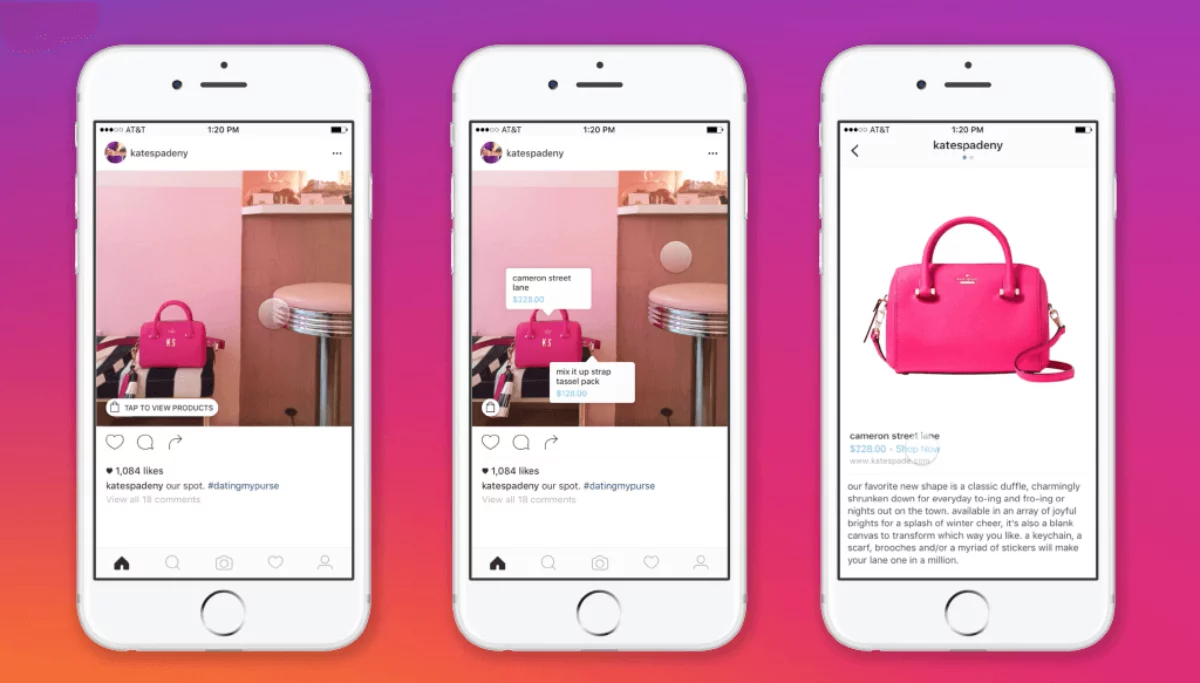
Increase brand exposure and drive traffic to your shop
Standing out in today’s competitive landscape is a huge challenge for both brands and content creators. Here’s where social media comes into the picture: brands that manage to build a strong social media following can later reap rewards such as improved brand awareness and increased website traffic. This, on the other hand, is a prerequisite for higher sales, whether through the Instagram app or your own webshop.
Promote your products or services in a non-intrusive way
People, on average, spend more than two and a half hours a day on social media. It’s easy to conclude that social media is about more than having fun—scrolling through social media has become an integral part of people’s lives. And because of its nature and the way social media is accepted by people, promoting your products or services comes off as a natural, non-intrusive way of inspiring customers and helping them decide what to buy next.

Tap into the massive buyer network
If you want to get more eyeballs on your products or services, Instagram gives you access to over 2 billion active monthly users. Moreover, if you are targeting younger audiences, Instagram can be the perfect fit for your needs. By 2027, 80.9% of the Gen Z population will be on Instagram. This generation represents $143 billion in buying power, and according to Whop’s survey, Instagram and TikTok have the biggest influences on Gen Z’s purchasing decisions.
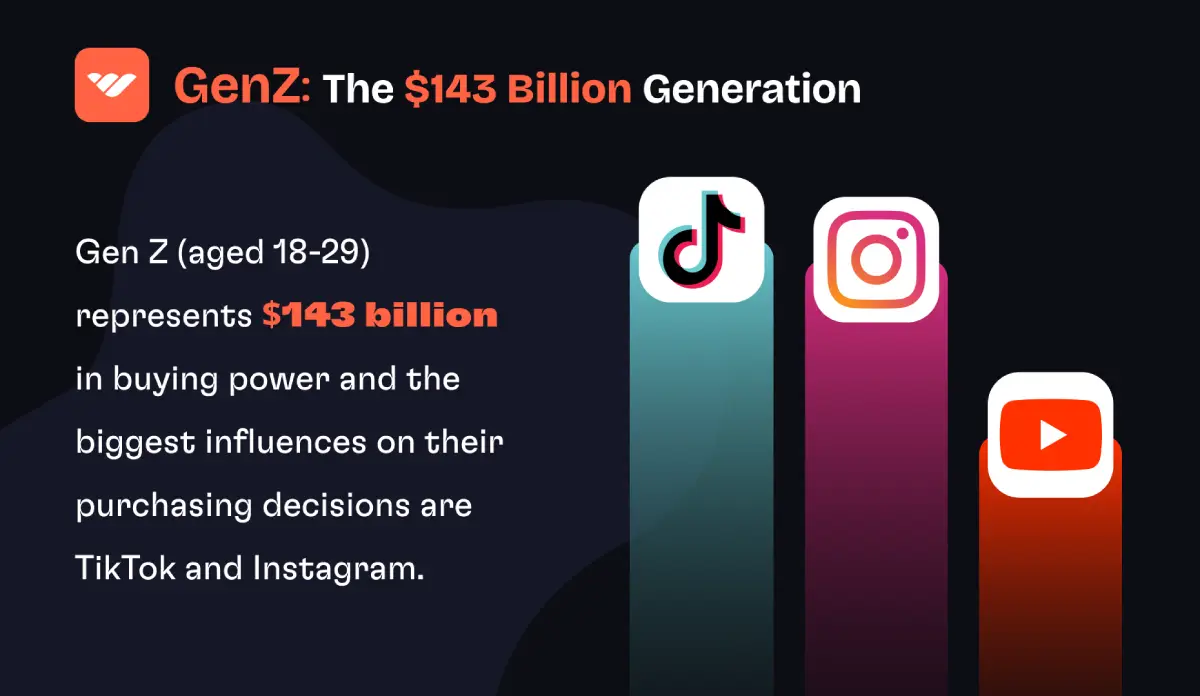
How Does Instagram Shopping Work?
People can shop your products through Instagram using product tags. You can use product tags in two ways:
- Organically
Using Product Tags to highlight items from your catalog directly in your images and videos - including in Feed, Reels, and Stories, allowing people to tap on a tag and learn more. - Paid
Ads with Product Tags can help you increase the reach of your shopping posts. You can set them up in Ads Manager or boost existing shoppable posts within Instagram.
There are four ways customers can shop on Instagram:
- In Feed and Explore
Shoppable posts in the feed and on the Explore page are marked with a shopping bag icon. Once you open a shoppable post, you can tap the product tag to view the product details page and complete the purchase on Instagram or the shop’s website. - In Stories
Brands often use shoppable Stories to announce new product arrivals. To shop directly from an Instagram Story, tap the story with a product sticker to view the product page and then complete your purchase on Instagram or the shop’s website. - In Reels
Businesses can tag products when they create reels on Instagram. If you see a product you like while browsing Instagram Reels, you can tap to view, buy, save, or learn more about the tagged product. - In shops on Instagram
For brands with an Instagram Shop, customers can go to the profile, tap the Shop tab, browse products, and make a purchase through Instagram or on the shop’s website.
Who Can Sell on Instagram?
Before we start talking about how to start selling on Instagram, let’s address the requirements and limitations of the platform. If you want to sell on Instagram, you must comply with Instagram’s Commerce Eligibility Requirements. Without going too deep into each, here are the requirements your Instagram professional account must meet in order for you to sell on Instagram:
- Comply with Instagram’s policies
First things first—your Instagram professional account must comply with Instagram’s Terms of Use and Community Guidelines. These policies help the platform foster and protect the community, and overstepping these boundaries may result in deleted content, disabled accounts, or other restrictions. - Represent your business and your domain
Your Instagram professional account must contain product listings available for direct purchase from your website. Your account must also represent the store or website associated with the domain provided. To confirm you own your domain, Instagram may require you to complete a Domain Verification process. - Be located in a supported market
Instagram also has some limitations in terms of markets where their shoppable content is available for businesses. So, in order to tag products, your Instagram account must be in an available market. If your account is located outside of an available market or you’ve used a VPN or proxy service to set up a shop on Instagram outside of an available market, you may lose the ability to tag products. - Demonstrate trustworthiness
Another requirement Instagram has is an authentic, established business presence, which gives a sense of trustworthiness. To achieve this, your Instagram professional account must be linked, contain all relevant information, and maintain a sufficient follower base. - Provide accurate information and follow best practices
If you want to sell on Instagram, your refund and return policies must be clearly displayed and easily accessible from your website or Instagram. Moreover, your product information on Instagram Shopping must not contain misleading pricing and availability information.
If you fail to satisfy these requirements at any time, Instagram reserves the right to disable your account.
Another common question is: do you need a business license in order to sell on Instagram? The short answer is: Instagram doesn't require a business license. However, depending on the laws and regulations of your local area, you might need a license to operate your business, even if you sell primarily online via Instagram.
How to Start Selling on Instagram: A Step-by-Step Guide
With all the technicalities out of the way, it’s time to go through the steps needed to start selling on Instagram. Let’s dive in.
Step #1: Convert your profile to a business account
Before you start selling on Instagram, you need a business account. An Instagram business account gives you access to features that can help you grow your business. To set up an Instagram business account, you need to create an Instagram account or use an existing account that you’ll switch to a business account.
Switching your profile to a business account is simple. All you have to do is go to Settings, tap Account type and tools, and select Switch to professional account. Then, just follow the steps, and you’ll be ready in just a few clicks.
With a business account you can access analytics, Instagram advertising, and business account features, such as additional buttons on your profile to let customers send you an email or view your shop.
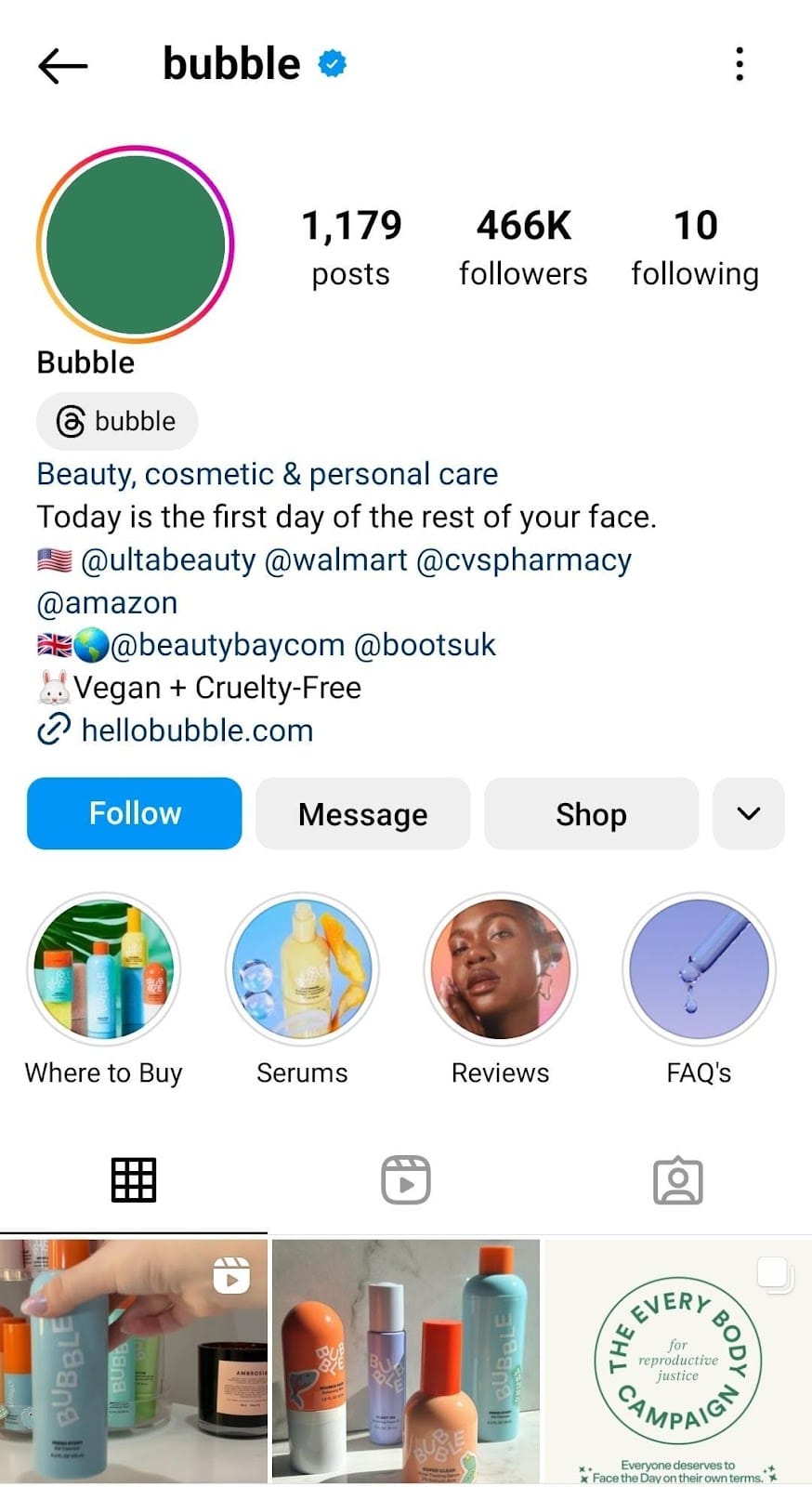
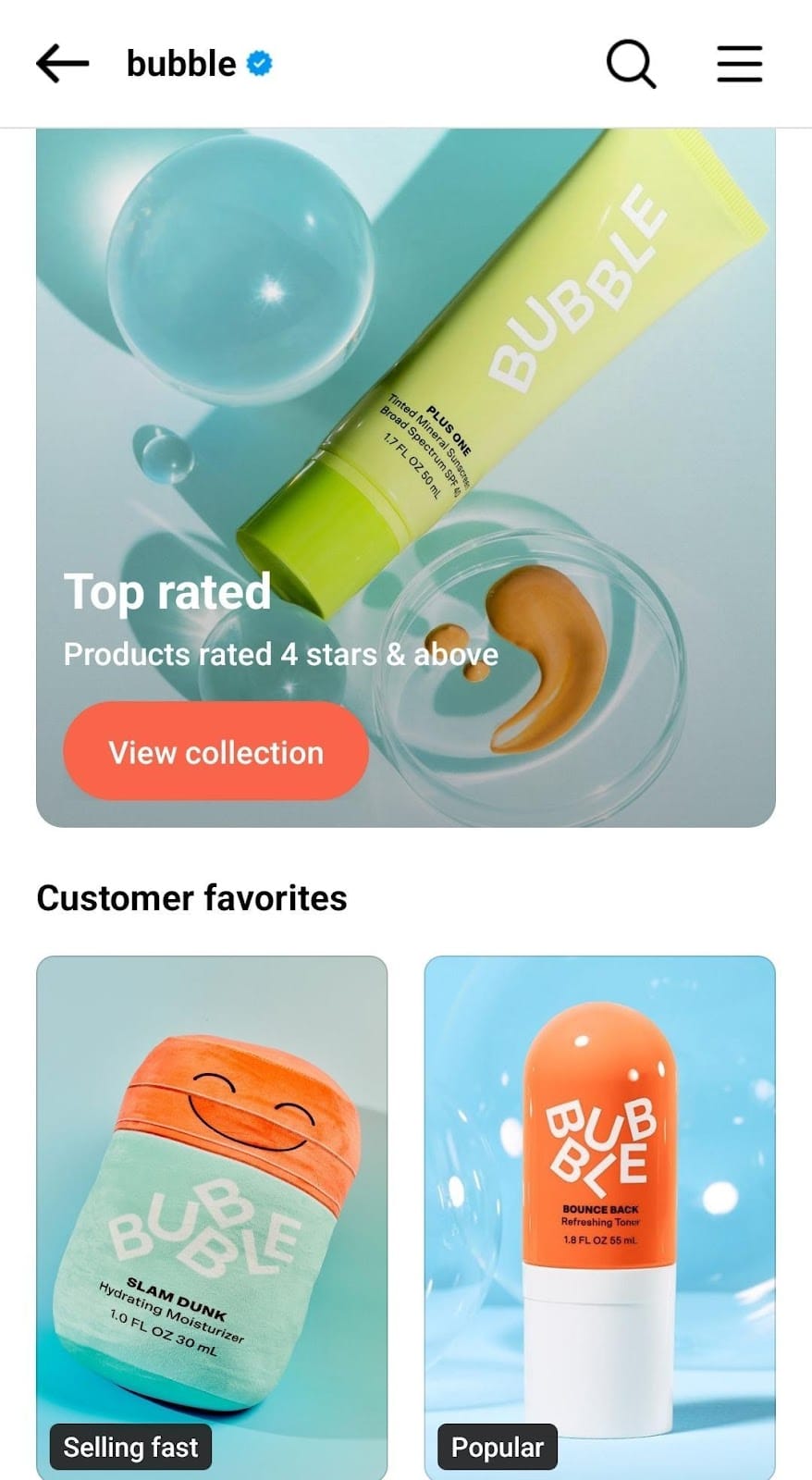
Step #2: Set up an Instagram shop
Once you’ve switched to a business account, it’s time to set up your Instagram shop. In order to open an Instagram shop, you need to have a Facebook page first since Facebook is the central place where you can set up your Instagram shop. Select Get Started, and create a shop.
If you’re already selling through Shopify or another partner platform, you can select that option to create your shop there. To continue setting up a shop in Commerce Manager, select 'I don’t use these platforms' then Next. You may have to choose a checkout method. Once you finish, select your Instagram business account.
Step #3: Connect your product catalog
Next, you need to select the catalog you want to use for your shop. When you set up a shop in Commerce Manager, you can select an existing catalog to connect or create a new one. Make sure to do this step correctly because you can only connect one catalog to your shop, and you can’t switch it later.
The catalog you select must meet catalog eligibility requirements for Shops on Facebook and Instagram. Some of the eligibility requirements include:
- Your catalog must contain the correct type of items
- Your catalog is not already being used for another shop in Commerce Manager
- You have full control of the business portfolio and permission to manage the catalog
- Your catalog contains at least one item and up to a maximum of 10 million items
- Your catalog contains valid product links that lead to the item's specific product page on your business's website
Before wrapping up this step, check your shop details, review and agree to the Seller Agreement, and click Finish setup to complete creating your Instagram shop.
Step #4: Create shoppable posts
Once you set up your Instagram shop, you can start creating shoppable content. Shoppable posts are just like regular posts, including in-feed posts, Reels, and Stories, but now you’ll be able to add product tags and help customers get more information about your products.
Product tags include a product name and link that leads customers to the product details page, where they can buy your product directly through the app (if you have Instagram Checkout) or direct customers to your website, where they can make the purchase.
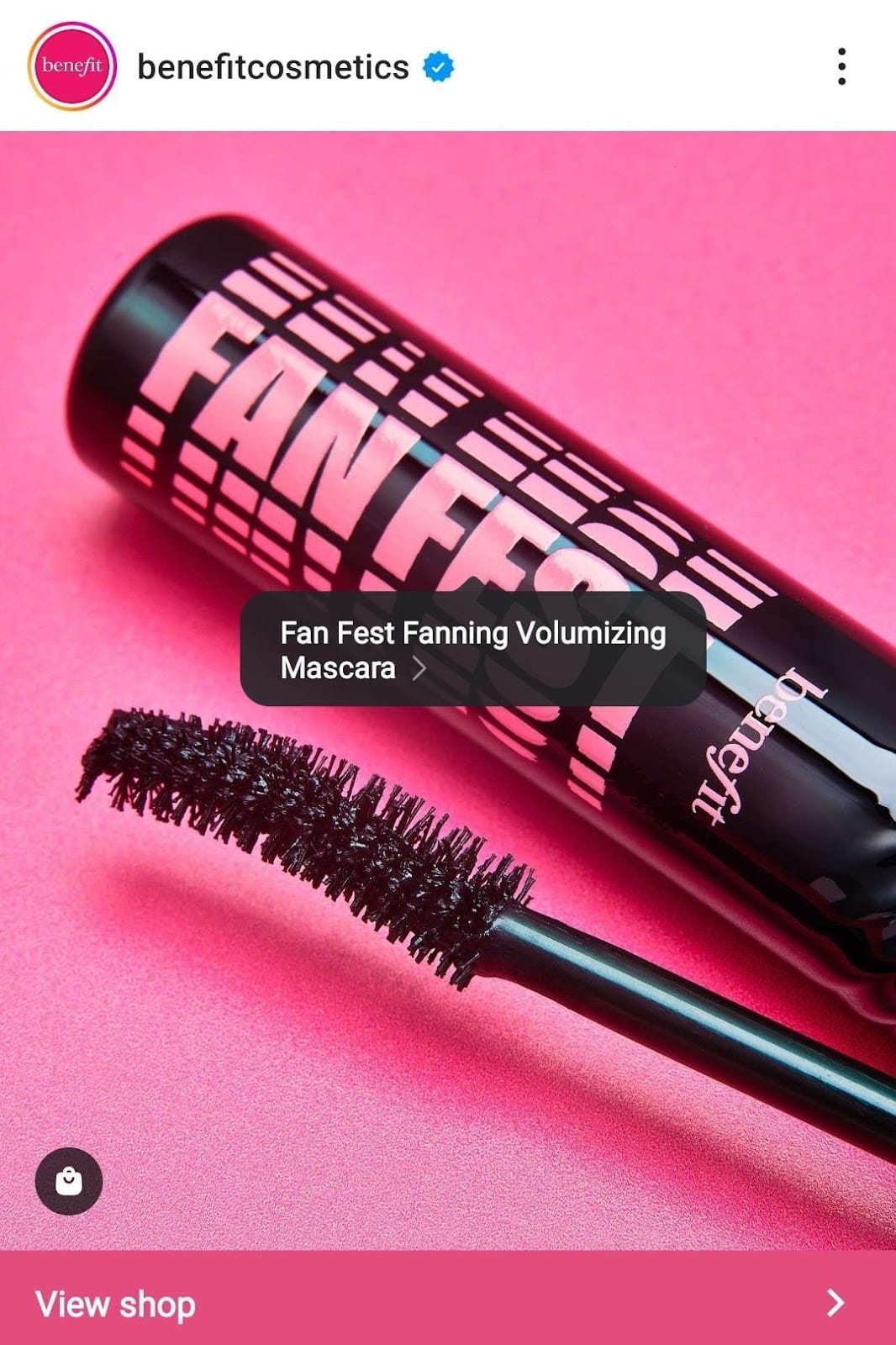
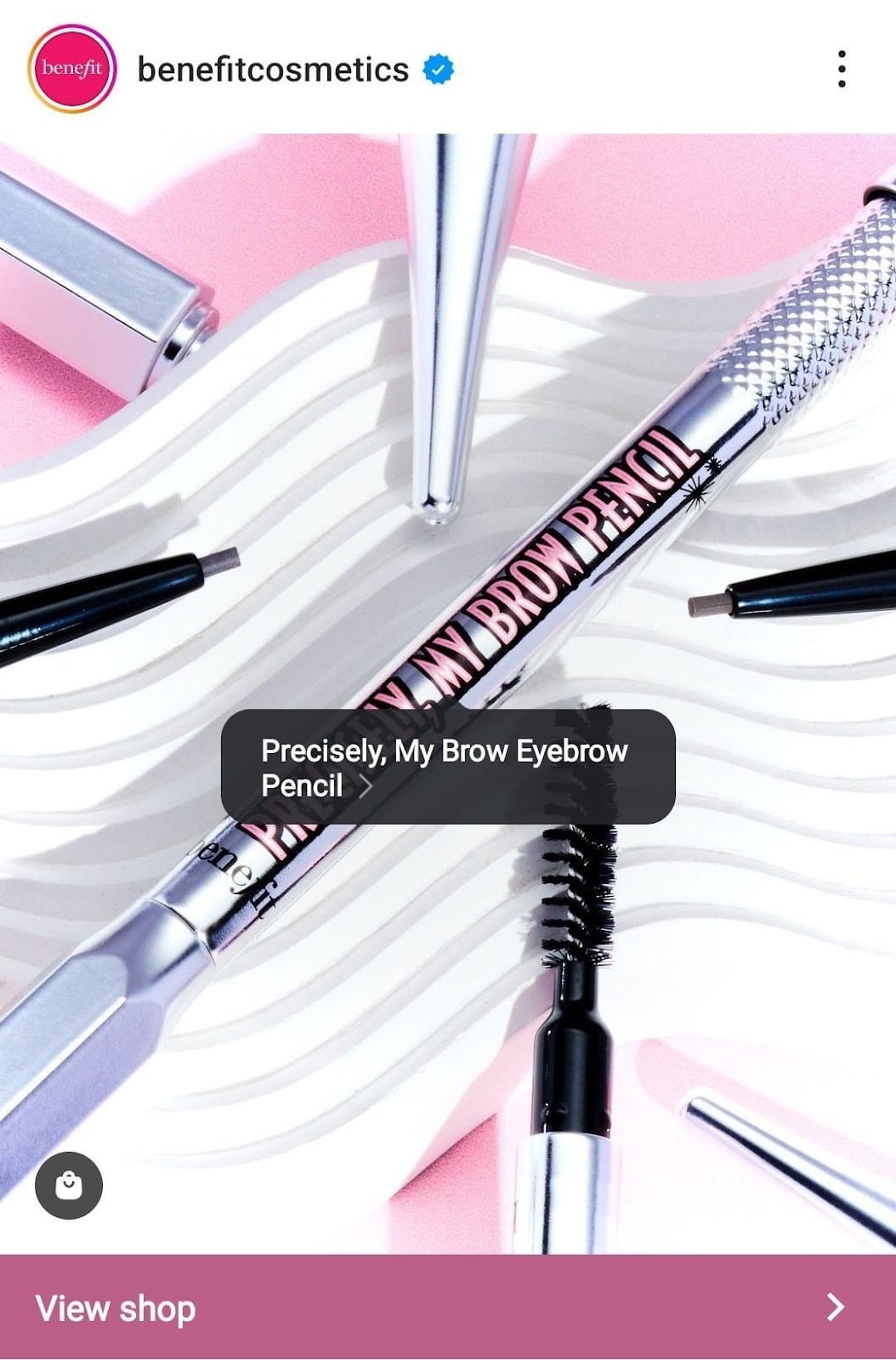
Adding product tags is simple. Start by creating a new post, and select Tag products in the post editor. Tap the products in the photo or video you want to tag and search for the products from your product catalog. Make sure you select the right products, and that’s it—you have shoppable content.
Step #5: Offer a seamless in-app experience with Instagram Checkout
To remove friction from the purchasing experience, you can add Instagram Checkout and allow customers to shop your products without leaving the app. This feature is available to all eligible business and creator accounts in the U.S., but Instagram has long-term plans to make checkout available to businesses outside the U.S.
Best Practices to Boost Your Sales on Instagram
After you set up your Instagram Shop, it’s time to focus on increasing sales through the platform. However, standing out on Instagram can be challenging—especially for small businesses and creators. But instead of elbowing your way for attention, we have a better proposal. Buckle up as we unmask the best practices that will help you capture your audience’s attention and boost sales.
Focus on high-quality content
There’s no way around it—Instagram is a visual platform driven by storytelling. So, there’s no secret sauce: if you want to succeed, you must focus on creating high-quality content that will entice your audience. Getting consent to be a part of people’s Instagram feeds means they enjoy consuming your content on a daily basis.
Reaching that point takes dedication. Go Pro is an excellent example of how top-notch content can help you build brand awareness and promote your products. With over 20 million followers on Instagram, Go Pro has cracked the code of a successful Instagram presence.

Create a balance between shoppable and regular content
Having the ability to tag your products doesn’t mean that every post you create should be shoppable. When it comes to shoppable posts, balance is the key. Besides creating shoppable posts, make sure you have enough tutorials, inspirational videos, behind-the-scenes, and user-generated content.
Glossier is one of the brands that strike the perfect balance between regular and shoppable content. Moreover, even when they tag products, they use images and videos that look very natural and are not picture-perfect or staged.
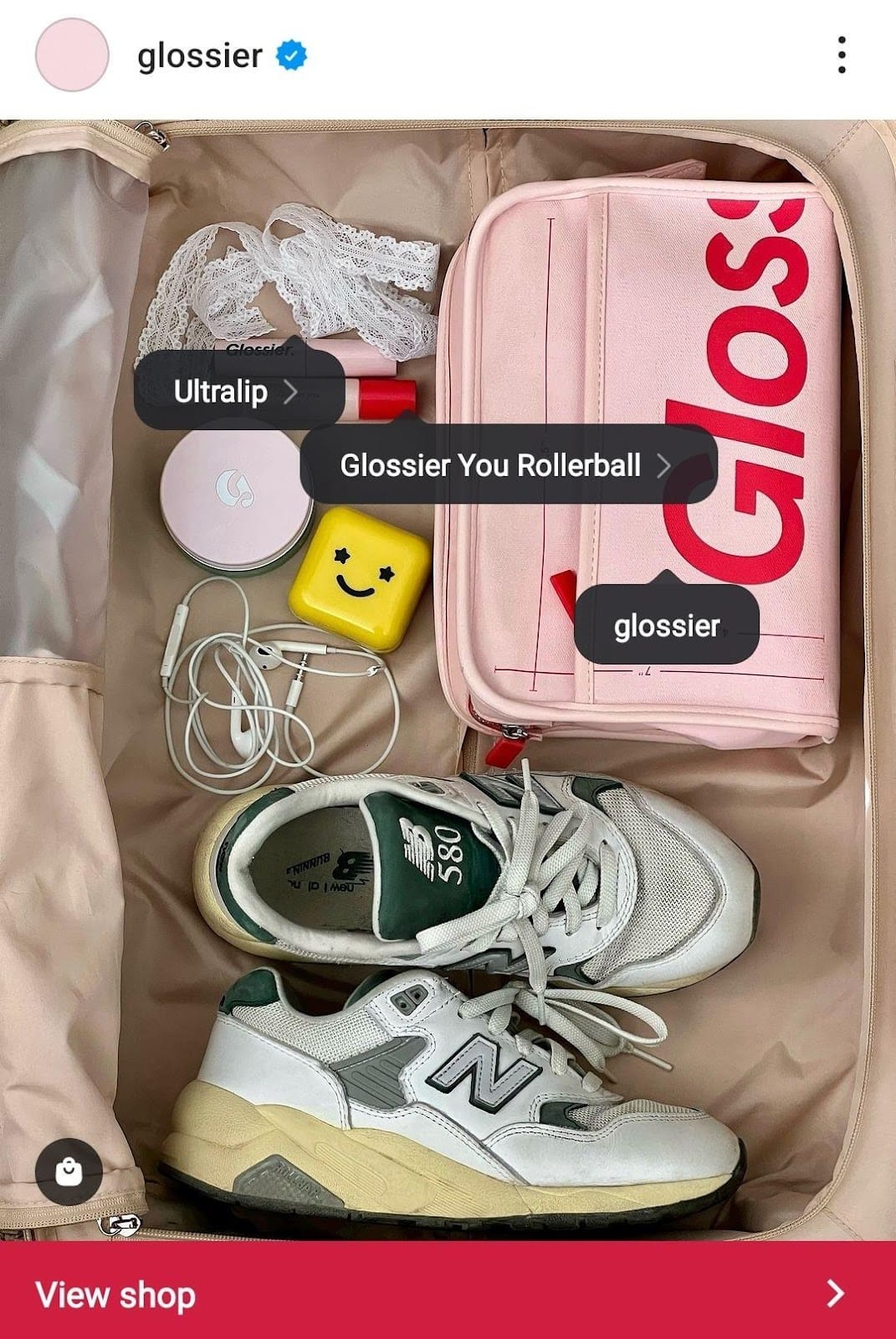
Engage with your audience
Social media is a two-way street. So, if you want to raise brand awareness or boost sales—posting regularly is not enough. You have to engage with your audience. Whether they have questions, complaints, or ideas, you must acknowledge their comments and respond.
The skincare brand Nemah.co, by the popular influencer Mary Lawless Lee, puts customers first by always asking questions and answering their comments. This helps the brand keep a pulse on customers’ needs and provide the best products and customer support.
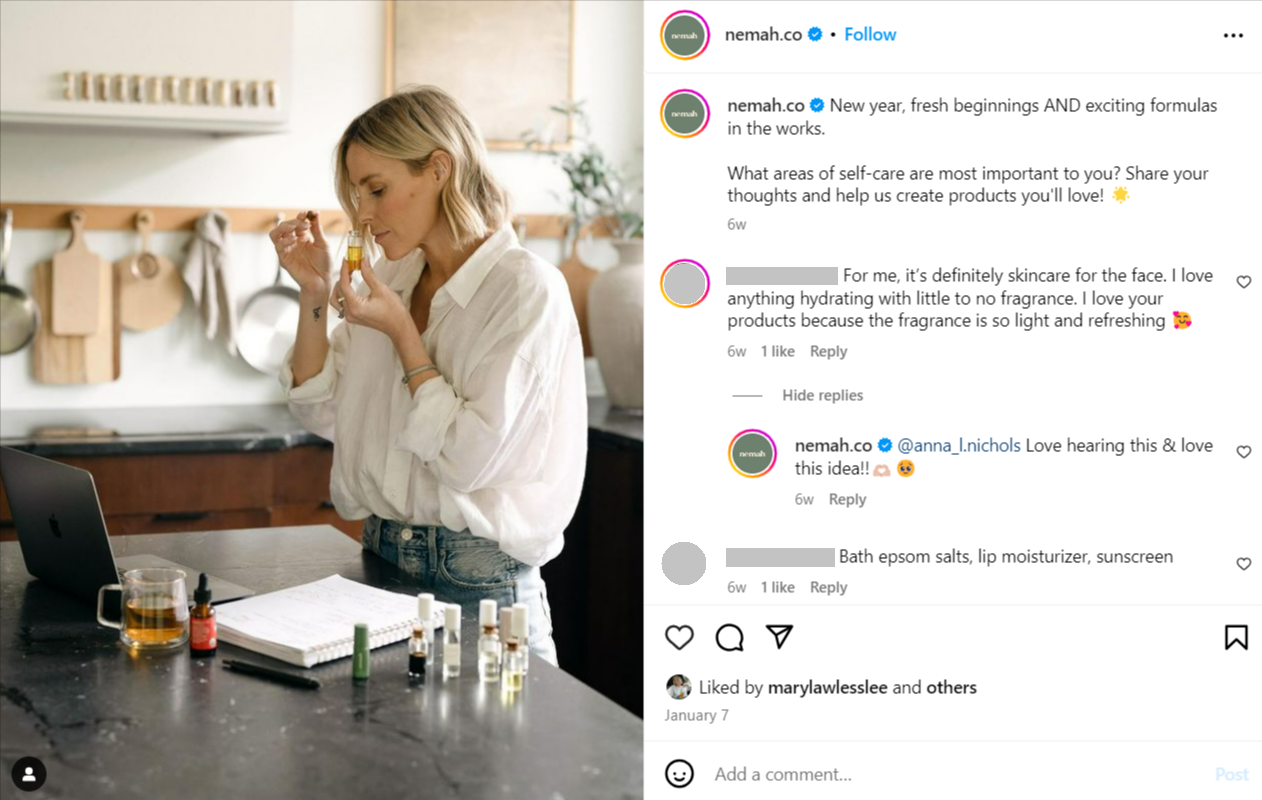
Test different formats
Opening your Instagram feed is like gazing into the night sky—there are so many posts that you have to compete with for your customers’ attention. On top of that, the Instagram algorithm keeps changing, adding to the complexity of being seen.
One of the brands that knows how to make the most out of the different formats available to get more eyeballs is Drunk Elephant. The brand plays around with flat lay images, Reels, answering customers’ questions through videos, sharing funny tweets, Q&As, and more to keep followers engaged.
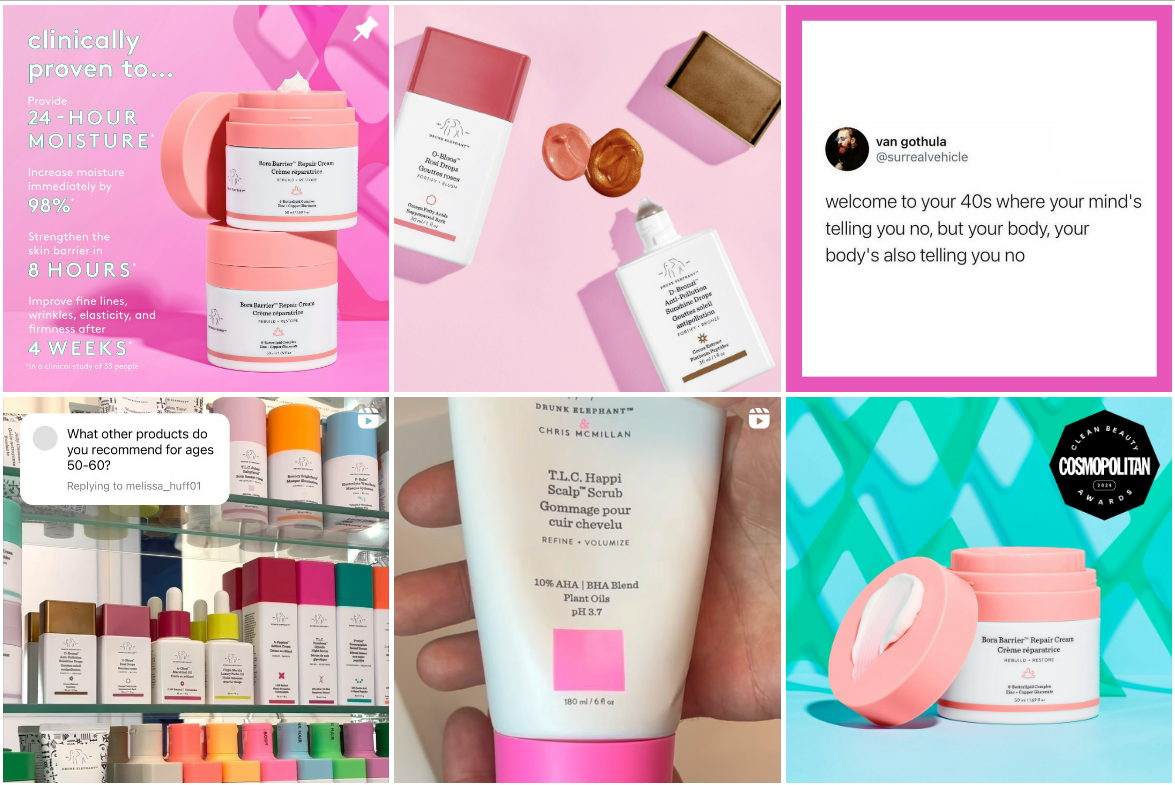
Use hashtags to improve discoverability
Despite the common misbelief that hashtags are not worth the effort, adding hashtags in the caption of your posts will help you improve your discoverability by making your post visible on the corresponding hashtag page. Make sure to research relevant and popular hashtags to reach a larger audience and connect with people interested in your content.
Lego consistently uses hashtags in its post captions. The hashtag Lego has over 23 million posts at the moment.

Work with creators to promote your products or services
As one of the most popular influencer marketing social media platforms, Instagram has the potential to fuel your business with the help of content creators. There’s no doubt that creators are the cornerstone of Instagram communities. The rise of the creator economy has made creators a true powerhouse that has a strong influence on customers’ purchasing preferences.
Most influencer collaborations involve sponsored content, where the creator posts about brands’ products or services, and the business pays the influencer or gives them free products. One of the brands well-known for its creator collaborations is Warby Parker. By working with creators and influencers, Warby Parker raises brand awareness but also taps into the potential of the creators’ social media following.
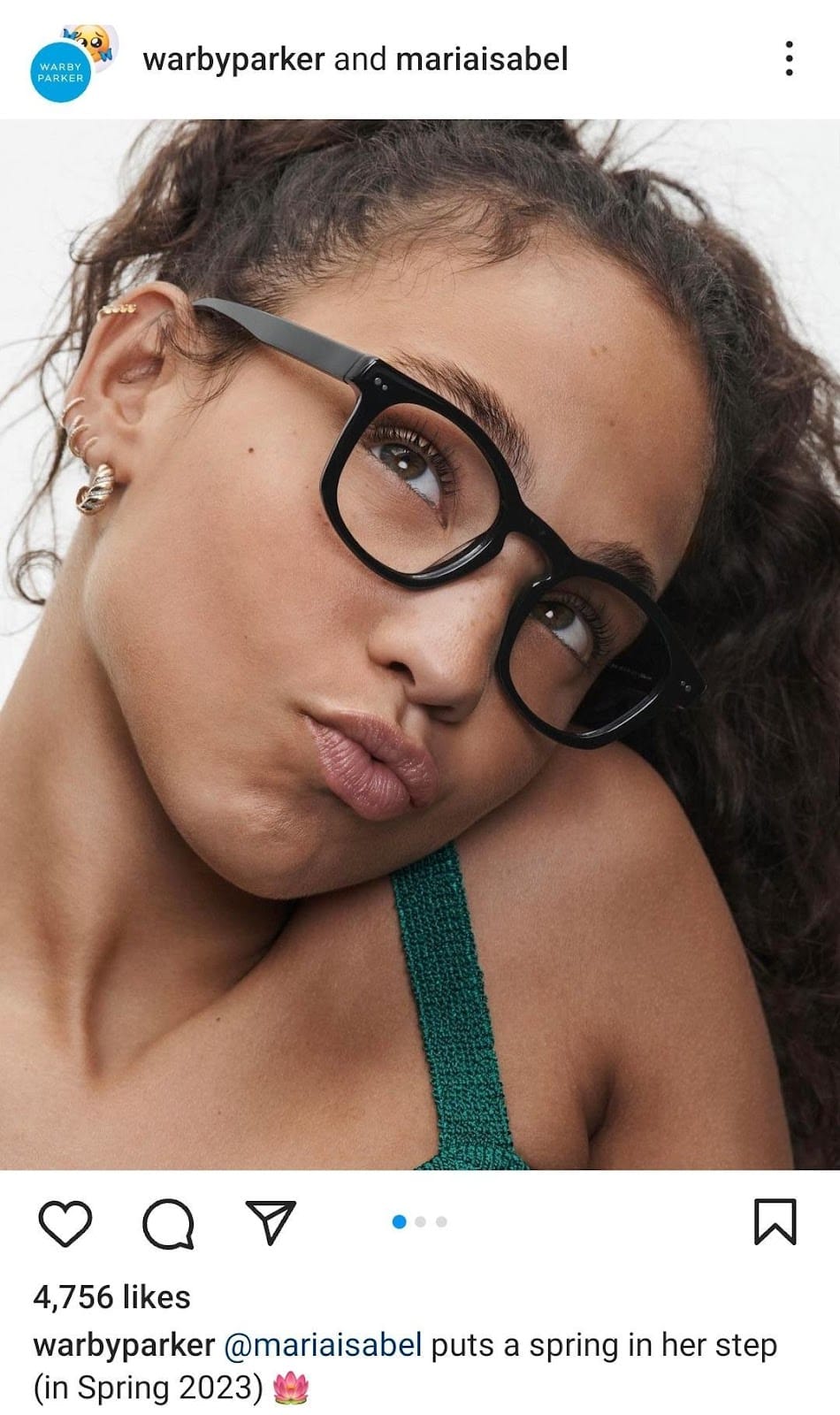
Consider running ads to reach a wider audience
If you want to go beyond the Instagram algorithm to reach a wider audience, you can run Instagram ads with product tags. Ads with shoppable posts allow people to get more information about the tagged product on Instagram and make it easier to start shopping. Shoppers can make purchases from your business’s website or purchase directly in-app (if you’re using Instagram Checkout). You can run existing shoppable posts as ads with product tags in Ads Manager and from Instagram.
Use analytics to understand what resonates with your audience
Without analytics, your Instagram performance is a black box. To understand what resonates with your audience and what brings results, you have to rely on Instagram insights. Tracking analytics will help you learn more about your followers and performance. Moreover, you can get insights into the engagement with specific posts, videos, Reels, and Stories. Equipped with this information, you can adjust your Instagram strategy and focus on the content that performs well.
As of June 2024, Instagram’s Creator Insights panel display gives you a snapshot of your brand’s performance for the last month. The new Creator Insights display shows your total followers, accounts reached, and accounts engaged. For moments when you just need a quick update, this is a good option to show your general growth and reach. This is only available for brand accounts.
Utilize Broadcast Channels to engage with your audience
Broadcast Channels are a new feature to Instagram that allow users—and that includes both brands and sellers—to send one-way messages to their followers.
As a seller, you can utilize your broadcast channels to get your followers to start paying even more attention. Some options to make that magic happen include offering exclusive product updates, announcing sales, or offering special discounts that can only be accessed through the channel.
Here are some of the other ways you can use broadcast channels to your advantage:
- Tease product launches and give broadcast channel followers exclusive timing updates
- Offer behind-the-scenes content! This includes tours of your creator space, new product sneak peeks, or introducing the rest of your team (if you're not a solopreneur)
- Collaborate with other influencers to get them to promote your brand or your products on their broadcast channels
- Engage with your followers in a more special, "limited edition" kind of way—this helps with organic marketing!
Because followers are given notifications whenever you post a new message, it’s a great way to make sure they don’t miss anything. This new Instagram feature is essential for making your followers feel connected with you and your content.
Can You Sell Digital Products on Instagram?
If you are an entrepreneur or a small business selling digital products, you might wonder: Can I sell digital products on Instagram? While Instagram is well-known for physical products, you can sell digital products (like ebooks) on Instagram, too. You just have to link your digital products to your Instagram shop and start selling.
But the better question is: How often do customers use Instagram to buy digital products?
Since physical products are the hallmark of Instagram, customers don’t rely on this platform as much when it comes to buying digital products. That said, there are plenty of other platforms that are more suitable for selling digital products with tools and features that will help you reach the right audience and increase sales.
By using a platform like Whop, you get access to a customer hub, which allows you to boost visibility and sales, giving your product exposure to a large audience. With over $250 million in sales so far, and over 4.8 million memberships sold, Whop is a thriving social commerce platform for people looking for digital products.
Some of the benefits of selling your digital products on Whop include:
- Product fulfillment - Whop handles digital product fulfillment, so you don't have to worry about sending the downloadable yourself
- Social proof - Unlike Instagram, Whop has a visible reviews system and Q&A, reassuring customers that what they are buying is legit
- Access to seller dashboard - A single place with all the insights you need to run your business, including finances (payments, payouts, and billing history), growth/marketing help (affiliate marketing, promo codes), and a robust resolution center (assisting businesses to keep customers happy)
- Industry-leading fee of 3% - Whop charges a 3% flat fee if you choose to integrate your own payment processor such as Stripe. When you use Whop Payments to process your card payments, Whop will act as the merchant of record. Whop charges 3% + payment processing fees.
24/7 customer service - Reliable help and support 24/7 , 365, to help you solve any challenges and get answers to your questions right away
Start Selling Today With Whop
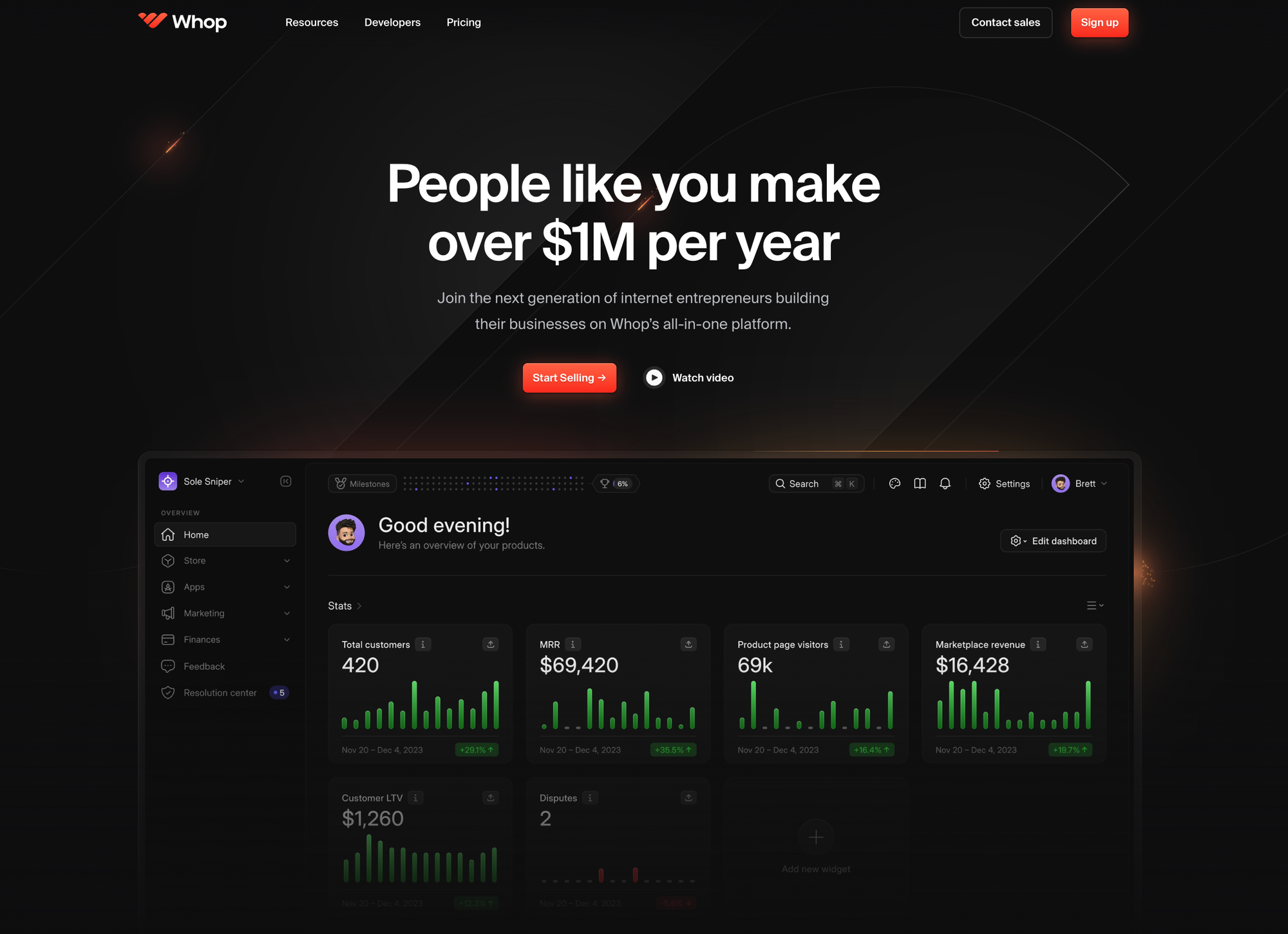
Whether you're starting your business or looking for more channels to sell your digital products, Whop is the perfect place for you. Using a platform like Instagram can be great for building a social media following and raising brand awareness. However, when it comes to selling digital products, Whop provides you with the tools you need to achieve success.
Ready to start making money from your digital products? Start selling your products on Whop. It takes less than 10 minutes to build your store, so sign up to Whop today.
